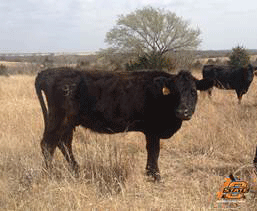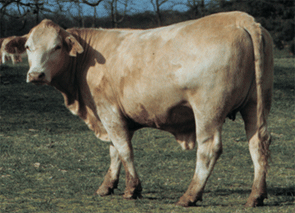
Well, this year’s calving season is already in the books. At the very least, we are too far along to make any considerable body condition changes in those females that are still to calve. However, it is not too late to begin planning for next year and now is a good time to evaluate the impact of body condition and rebreeding success in the coming weeks. Let’s set the stage for this discussion.
Reproductive efficiency is the single most significant economic metric of a cow/calf enterprise. In layman’s terms, a beef cow’s primary function is to produce a healthy calf, but an efficient beef cow’s primary function is to produce a healthy calf every 365 days. If they are not producing a calf within a 365-day interval, something is amiss and profits are declining. So, what does this have to do with body condition? Answer: everything.
Nature dictates that a cow’s primary job, and therefore her priority for nutrient intake and utilization, is to provide for her calf. If nutrition is limiting, she will undertake this primary task at the expense of her own flesh, pulling energy reserves from stored fat (external and intermuscular fat depositions) to provide milk for the nursing calf. Nature further dictates that if she cannot adequately care for the nursing calf AND maintain her own body condition, she will not be allowed to conceive another calf. Nature says we must take care of the living first, before we can conceive another generation. Mother Nature is a wise old Dame.
Insuring that cows have adequate stored energy reserves (body condition) is the only way that we can give that cow an opportunity to be “efficient”, or to calve every year within that 365-day interval. So, to assess body condition, we have assigned a numerical system (1-9) to differentiate between various degrees of stored fat reserves. Extensive research has proven that there is a strong correlation between these Body Condition Scores and a cow’s ability to return to estrous and conceive in a timely manner. Considering that the gestation period for cattle is 9 months, which means she needs to cycle and rebreed within 60-90 days after calving if she is going to meet the 365-day calving interval. The following graph is a summary of six herds in four states, showing the effect of body condition on rebreeding success.
You can readily see that cows in a body condition score of 6 or higher, immediately prior to calving, rebreed in a timely manner at a rate of 50% greater than those cows in a body condition score of 4 or less. What is the end result? Simply put, it means that, in a 100-cow herd, 50 more cows will calve again within the 365-day interval, and that means more pounds of weaned calf weight to market and older, more developed heifers to select replacements from. To give some visual perspective, below are a couple images representing those two groups of females.
Mature cows should calve in a Body Condition Score of 5 or 6 and, due to their higher nutrient demand, first-calf heifers should calve at a BCS 6. Logically then, evaluating Body Condition Scores, on the spring-calving cows, again this fall at weaning time will give you some time to plan your winter supplement program so as to add some body condition prior to the throes of winter and late-gestation, when it becomes very difficult and expensive to add weight and condition to cows.
Stay tuned next week and we will discuss how a cow’s Body Condition Score also affects the health of her calf.
Find out what’s happening on the Oklahoma Cooperative Extension Calendar at https://calendar.okstate.edu/oces/#/?i=2
Follow me on Facebook @ https://www.facebook.com/leland.mcdaniel
Oklahoma State University, in compliance with Title VI and VII of the Civil Rights Act of 1964, Executive Order 11246 as amended, and Title IX of the Education Amendments of 1972 (Higher Education Act), the Americans with Disabilities Act of 1990, and other federal and state laws and regulations, does not discriminate on the basis of race, color, national origin, genetic information, sex, age, sexual orientation, gender identity, religion, disability, or status as a veteran, in any of its policies, practices or procedures. This provision includes, but is not limited to admissions, employment, financial aid, and educational services. The Director of Equal Opportunity, 408 Whitehurst, OSU, Stillwater, OK 74078-1035; Phone 405-744-5371; email: eeo@okstate.edu has been designated to handle inquiries regarding non-discrimination policies: Any person (student, faculty, or staff) who believes that discriminatory practices have been engaged in based on gender may discuss his or her concerns and file informal or formal complaints of possible violations of Title IX with OSU’s Title IX Coordinator 405-744-9154